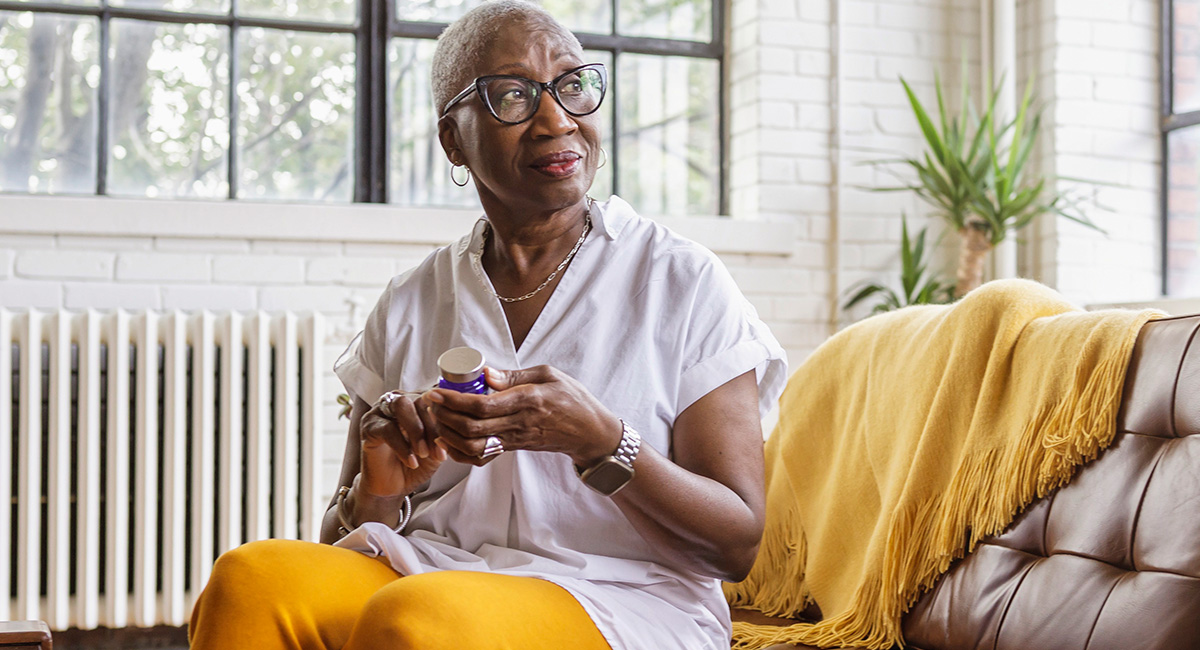Is a Pain Clinic Right for You?
Learn more about how specialized clinics can help treat patients with chronic pain and give them the tools to reclaim their life.
Chronic arthritis pain can disrupt every aspect of life – from work performance and daily chores, to getting quality rest and even personal relationships. If you can’t get your pain under control despite treatment and healthy lifestyle habits, you may want to consider attending a pain rehabilitation program (PRP).
What is a pain clinic?
While pain clinics can help anyone with chronic pain, people with inflammatory types of arthritis and fibromyalgia may benefit the most from PRPs, says Daniel Clauw, MD, professor of anesthesiology at the University of Michigan.
There are two main types of pain clinics.
Interdisciplinary Clinics: Are one-stop shops where a team of health professionals works together to help patients by using a variety of evidence-based approaches. Programs that utilize an interdisciplinary approach are best, says Clauw, and may include physical and occupational therapists, psychologists, dietitians, nurses, doctors and other healthcare providers.
Block Clinics: Offer procedures such as injections and nerve blocks. These procedures are usually performed by an anesthesiologist, most often for specific problems such as low back or neck pain. But unless your doctor refers you to this type of provider, Clauw advises against block clinics.
What to Expect
A quick fix is not the goal – neither is the total elimination of pain. Rather, clinics aim to restore function and improve quality of life by teaching physical, emotional and mental coping skills to manage pain.
Patients typically attend sessions all or most of the day for several weeks as an outpatient. Other programs may last longer but occur on a part-time basis.
A typical day at a PRP might include:
-
An hour of physical therapy (PT), which focuses on improving movement.
-
An hour of occupational therapy (OT), which focuses on improving the ability to perform daily activities.
-
Several hours of pain education classes that teach how chronic pain works.
-
An hour of relaxation and mind/body therapy.
Other Pain Management Techniques
Patients also learn other techniques to manage pain, including guided imagery, breath training and relaxation techniques.
Clinics may also provide cognitive behavioral therapy, which teaches problem-solving skills and helps patients break the cycle of pain, stress and depression by reshaping their mental responses to pain. This type of therapy may be particularly helpful for people with fibromyalgia.
Attending a pain clinic also provides support and validation that comes from being around people who’re facing similar pain challenges. Additionally, PRPs may educate family members about pain and the best ways to support their loved ones as they manage its effects.
What about medication?
Medication isn’t automatically a part of a treatment plan. In fact, some PRPs require that patients agree to taper off opioids. “Pain medicine in a chronic pain patient can actually make pain worse,” says Jeannie Sperry, PhD, co-chair of addictions, transplant and pain at Mayo School of Medicine in Rochester, Minnesota. “It makes the brain more sensitive to pain, so people experience higher and higher levels.”
Some clinics also taper patients off sleep and anxiety medications and muscle relaxants. Many patients start taking these medications to treat the side effects of opioids, like sleep disruption, sedation, agitation, nausea and sex problems. But when patients taper off opioids, the need for other medications may diminish.
Movement is key
Movement helps reduce pain, so getting people physically active is one of the main goals of pain clinics. Staying active is especially critical for people with arthritis, says Clauw. “If they don’t keep moving their joints, they can develop contractures, the shortening and hardening of muscle and other tissues, which limit the range of motion,” he says. In addition to teaching patients about the benefits of exercise, regular PT and OT sessions at PRPs can help tremendously with pain and functional improvement.
Finding a clinic
The best PRPs tend to be associated with academic medical centers, such as those at Mayo Clinic, Cleveland Clinic and Johns Hopkins, says Sperry. They can tell you the outcomes of their programs and typically have providers associated with research institutions.
To find a clinic near you, see if your state has a branch of the American Chronic Pain Association, which may provide leads. The American Pain Society has a list on its website of “clinic centers” that have won awards from the society.
The results that come from attending a pain clinic typically last. Sperry’s clinic measures patients when they come in, when they leave, and six months later. These patients continue to have significant improvement in mood, quality of life and physical outcomes, she says.
Stay in the Know. Live in the Yes.
Get involved with the arthritis community. Tell us a little about yourself and, based on your interests, you’ll receive emails packed with the latest information and resources to live your best life and connect with others.


